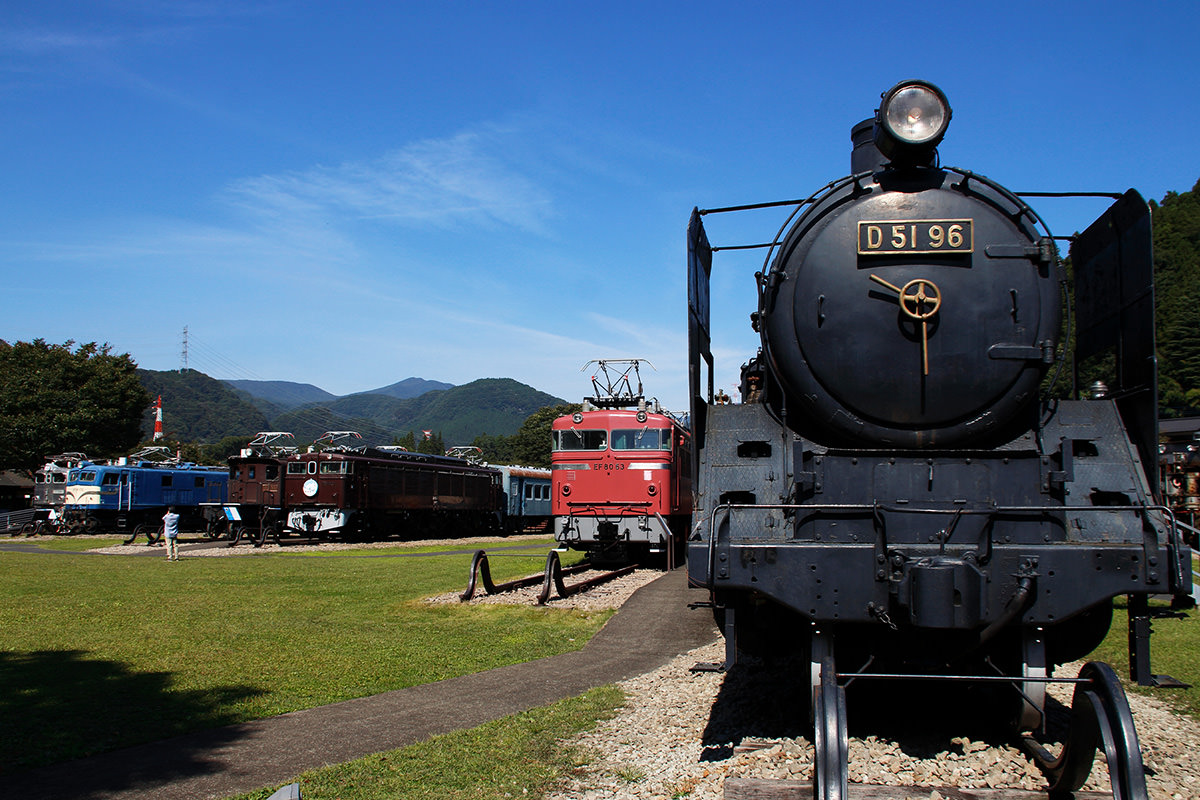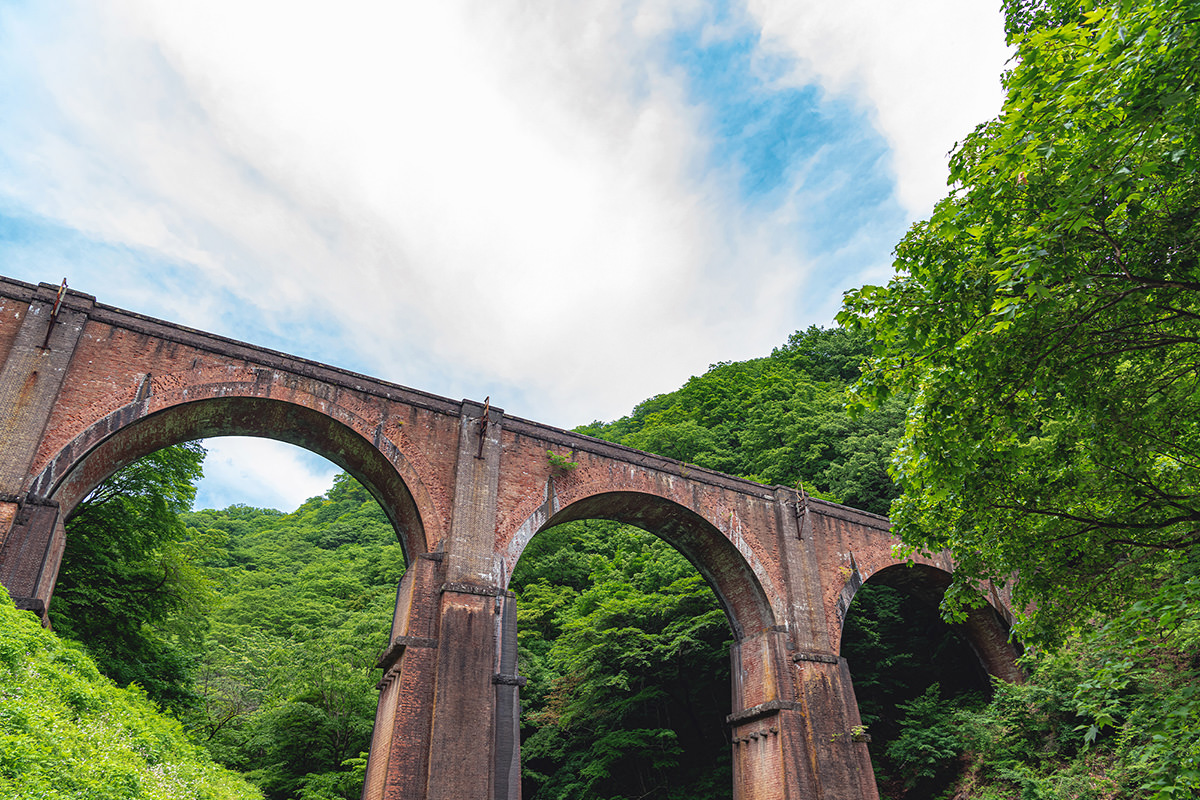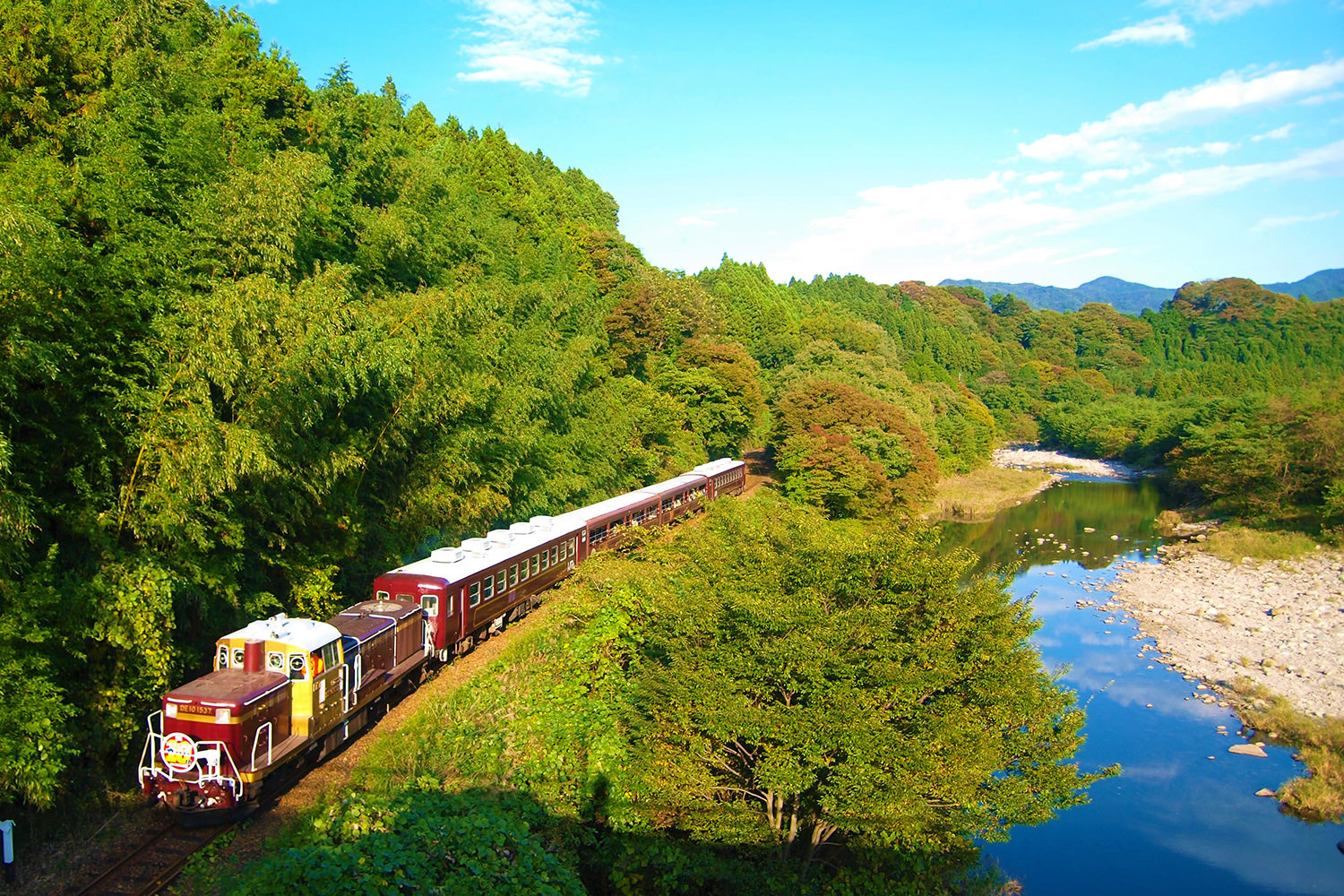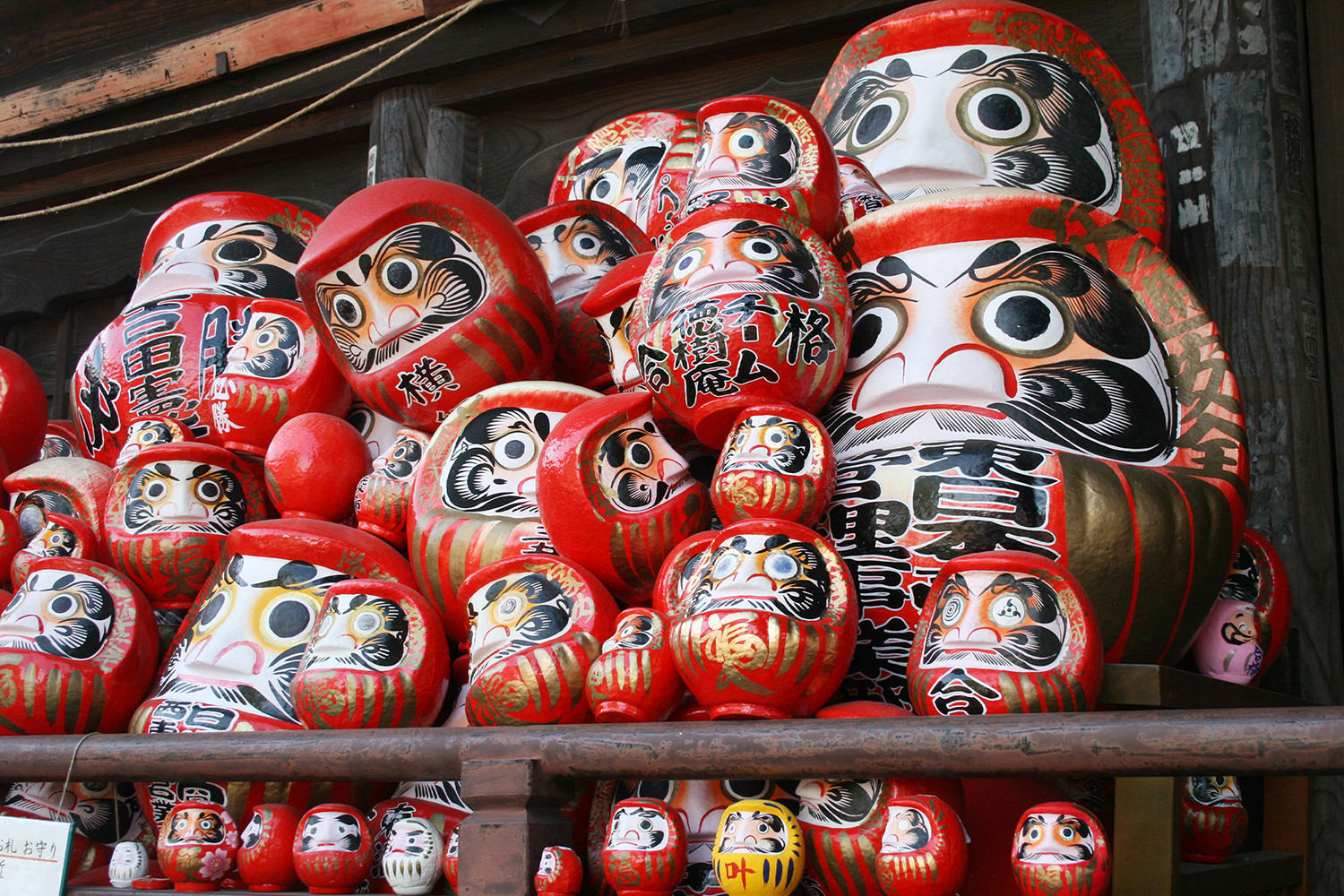
Build a custom itinerary using our Trip Planner. How to use
Action & Adventure
Usuitoge Tetsudo Bunka Mura

Build a custom itinerary using our Trip Planner. How to use
Explore the countryside aboard a vintage locomotive

Last updated: May 08, 2025
Trains are a part of the Japan travel experience. Whether you’re gliding at high speed on a shinkansen (bullet train), squeezing in with the rush-hour commuters on the Tokyo Metro, or opting for a scenic ride through the countryside, rail travel in Japan confirms the age-old maxim that “life is the journey, not the destination.” Gunma is a train lover’s dream, with some of the coolest retro trains and nostalgic steam locomotives you could hope for.
Swap the smooth shinkansen for the sounds and atmosphere of a steam locomotive, and embark on a memorable journey into the heart of Gunma. The prefecture’s two steam locomotives run out of Takasaki Station and, depending on the day, rumble out to either Yokokawa or Minakami. Whichever route you choose, you can enjoy views of mountains, rivers, rural villages, and farms, as you chug along.
The routes are operated by two different steam locomotives. The D51 498 was built to pull freight cars and climb hills with ease, while the C61 20 was built to be a smoother ride, pulling passenger cars. On weekends and public holidays, there is one daily round-trip steam locomotive run. Check the schedule to see whether the day’s route is to Minakami (around two hours) or Yokokawa (around one hour). Note that the Minakami route does not run in winter, and journeys must be booked in advance.
Even those who do not have a ticket can view one of Gunma’s steam locomotives up close outside Minakami Station. One train is on permanent display near a turntable. If you’re lucky, you can see the train turn around. Trainspotters can also step onto the platform with a 150 yen ticket to take photos of this magnificent locomotive.
Usuitoge Tetsudo Bunka Mura, or Usui Pass Railway Heritage Park, commemorates Japan’s first rack and pinion railway, used for climbing steep grades. Trains chugged along this route from 1893 to 1997 before the shinkansen bypassed it via a tunnel, making the line obsolete. Today, the park houses assorted diesel engines and other trains, with hands-on exhibits for visitors to touch, board and ride.
Japanese speakers can enroll in a one-day lecture on operating the EF63, and then take the helm of this electric train for themselves.
An hour’s walk, or a 10-minute drive, along the disused Usui Pass is Usui 3rd Bridge. The bridge is also known as Megane-bashi, or “Eyeglasses Bridge.” The largest arched brick bridge in Japan, it was built in 1892 as part of the railway line between Yokokawa in Gunma and Karuizawa in Nagano. Now that trains no longer run on the line, the Usui 3rd Bridge is part of a 6-kilometer nature trail called Abt Road, which features six bridges and 10 tunnels.
Take the Watarase Keikoku Railway between Kiryu Station in Gunma and Mato Station in Tochigi to enjoy the seasonal scenery as local trains meander through the mountains. The scenic route runs along the Watarase River, through arches of cherry blossom in spring and blazing foliage in fall. Two retro trolley trains, the Watarase Keikoku-Go and the Wasshi-Go runs one round trip each per day in April to November. From December to March, only Wasshi-Go runs. A one-way journey takes about two hours.
Those more interested in trainspotting can view the trolley train from various scenic locations along the route. Takatsudokyo Gorge is a great vantage point form which to spot the train. Another option is Godo Station, which is particularly beautiful in early April when hanamomo peach blossoms and cherry blossoms frame the tracks.

Join a walk through history along the remains of the historic Usui Line which ran between Yokokawa in Gunma and Karuizawa in Nagano. The line opened in 1893 and played a key role in the development of Japan’s silk industry, facilitating the transportation of raw silk from Gunma and Nagano to Tokyo and Yokohama. The line closed in 1997 and some sections have been converted into walking paths. Guided walks are typically held from early spring to autumn, allowing participants to walk along some of the remaining tracks and through tunnels that are normally off-limits. A highlight of the walk is crossing the beautiful brick-built arched Usui 3rd Bridge.

A section of decommissioned railway tracks in Agatsumakyo Gorge has been transformed into a rail biking experience for a fun and active way to take in the scenery. Ride an electric-assisted bicycle trolley along the 2.4-kilometer route (one way), passing through historic bridges and tunnels, and ending at the base of Yamba Dam. The trolleys require at least two people to operate, with one person riding a bike on each side. There is an option to add one or two seated passengers between the bikes, for a maximum of four participants. So bring a friend or a group of friends with you to enjoy the scenic beauty of the area. With its leisurely pace and unique mode of transportation, this ride offers a fresh take on rail travel and a relaxing way to experience the dramatic landscape.

Build a custom itinerary using our Trip Planner. How to use

Build a custom itinerary using our Trip Planner. How to use

